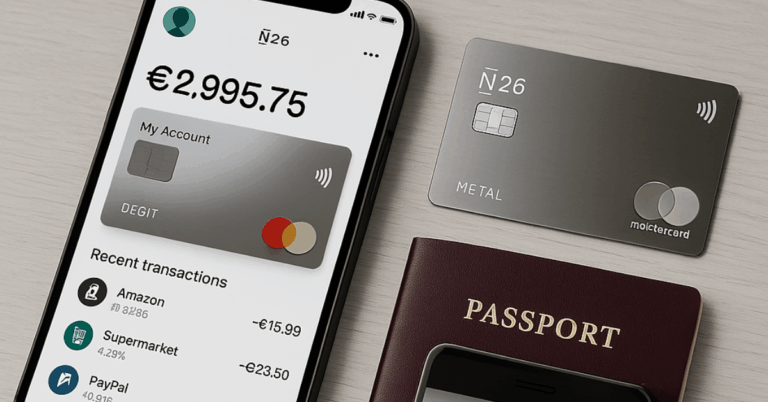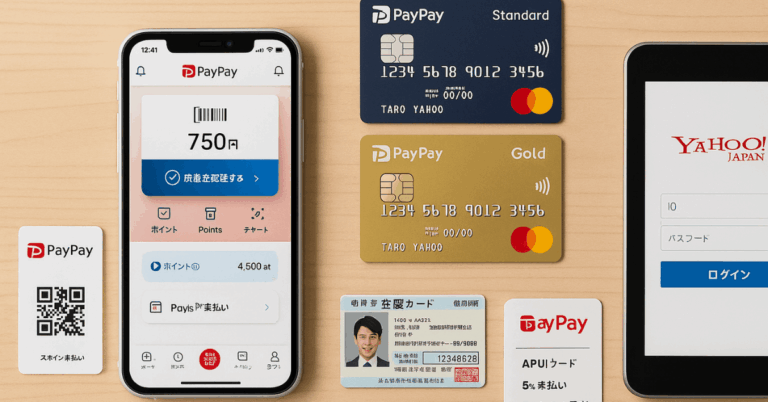Amidst evolving economic landscapes, innovative infrastructure financing models are reshaping development strategies.
This article explores ten groundbreaking approaches revolutionizing infrastructure finance, from Public-Private Partnerships (PPPs) to Green Bonds.
These models are shaping the future of global development.
Public-Private Partnerships (PPPs)
PPPs are collaborations between the public and private sectors, leveraging expertise and resources to meet public infrastructure needs efficiently.
Here are some successful examples:
- The London Underground Upgrade: A partnership modernized London Transport, enhancing efficiency and passenger experience.
- Denver International Airport: This major US airport’s construction and operation involved a PPP model for timely completion and maintenance.
- The Channel Tunnel (Eurotunnel): A PPP facilitated the construction of this UK-France link, boosting cross-border transportation and trade.
- Highway 407 ETR in Ontario, Canada: A PPP-created toll road offers efficient transportation and revenue generation for the government.
- Schools Infrastructure Development in Australia: PPPs build and maintain schools, ensuring cost-effective quality education infrastructure.
These examples showcase the diverse benefits of PPPs in global infrastructure projects.

Green Bonds
Green bonds are financial tools for environmentally beneficial projects like renewable energy or sustainable infrastructure.
Their role in infrastructure financing includes:
- Mobilizing capital for renewable energy projects
- Funding sustainable transportation initiatives
- Supporting the development of energy-efficient buildings
- Financing water and waste management infrastructure
- Encouraging innovation in environmentally friendly technologies
Infrastructure Investment Trusts (InvITs)
InvITs pool investor funds for infrastructure projects, offering stable returns through project revenue dividends.
Their functioning includes:
- Acquiring operational infrastructure assets
- Generating income through tolls, lease rentals, or other revenue streams
- Distributing returns to investors in the form of dividends
- Maintaining and managing assets to ensure operational efficiency
- Providing liquidity to investors through trading of InvIT units on stock exchanges
Examples of Infrastructure Projects Funded through InvITs
InvITs fund diverse infrastructure projects, providing stable returns for investors and advancing critical asset development.
- Toll roads and highways.
- Power transmission lines and substations.
- Renewable energy projects such as wind and solar farms.
- Gas pipelines and distribution networks.
- Telecommunication towers and networks.
Crowdfunding Platforms
Crowdfunding platforms for infrastructure enable communities to support public projects financially, fostering community involvement.
Case Studies Illustrating Successful Crowdfunding Campaigns for Infrastructure
Crowdfunding has emerged as a powerful tool for financing infrastructure projects, enabling community participation and support in their development.
- The renovation of a historic bridge in a small town, funded by residents through a crowdfunding platform.
- Construction of a community park in an urban area, with funding secured through a crowdfunding campaign driven by neighborhood residents.
- Solar panel installation on public buildings funded by environmentally-conscious citizens through crowdfunding.
- Restoration of a public library in a rural community, achieved through a crowdfunding effort engaging local patrons and supporters.
- New suburban playground funded by parents and community via crowdfunding, prioritizing children’s well-being.
Impact Investment Funds
Impact funds focus on infrastructure addressing societal and environmental challenges like renewable energy and sustainable transportation.
They aim for financial returns alongside positive social and environmental impact.
Examples of Impact Investment Funds Supporting Infrastructure Development
Impact investment funds crucially finance infrastructure focusing on social and environmental impact, aiding sustainable development.
- The Global Infrastructure Fund, investing in renewable energy projects worldwide to combat climate change.
- The Sustainable Cities Fund finances urban infrastructure initiatives for improved public transportation and waste management.
- The Clean Water Fund supports the development of water treatment and sanitation facilities in underserved communities.
- The Rural Electrification Fund invests in off-grid renewable energy solutions to provide electricity to remote areas.
- The Green Building Fund promotes energy-efficient building practices through investments in sustainable construction projects.
Asset Recycling
Asset recycling involves governments selling or leasing existing infrastructure assets to generate revenue for funding new projects.
It leverages private sector expertise for efficient asset management and development.
Case Studies of Asset Recycling Initiatives
Asset recycling initiatives showcase leveraging existing infrastructure assets to fund new projects, highlighting its potential in infrastructure financing.
- Sale of a government office building to fund a new transit hub.
- Leasing a toll road for public transportation upgrades.
- Privatizing a water treatment facility to invest in renewable energy.
- Selling a utility company for sustainable energy development.
Development Impact Bonds (DIBs)
Development Impact Bonds (DIBs) entail private investors providing upfront capital for social projects in developing regions, with returns linked to predefined outcomes.
These outcomes are measured, incentivizing efficient project implementation and risk-sharing.
DIBs attract private investment into vital infrastructure projects, promoting sustainable development.
Examples of Successful DIB Projects
Development Impact Bonds (DIBs) enable impactful social projects in developing regions, delivering tangible results through innovative financing.
- A DIB-funded education initiative in Sub-Saharan Africa resulted in a significant increase in school attendance and academic performance.
- A healthcare DIB project in South Asia successfully reduced maternal mortality rates through improved access to prenatal care.
- An agriculture DIB project in Latin America increased crop yields and incomes for smallholder farmers.
- A sanitation DIB initiative in Southeast Asia improved access to clean water and sanitation facilities, reducing waterborne diseases.
Value Capture Financing
Value capture financing funds infrastructure by capturing property value increases.
It promotes diverse revenue sources and efficient development planning.
Case Studies Demonstrating Effective Implementation of Value Capture Mechanisms
Effective value capture mechanisms are demonstrated through various case studies, showcasing their utility in financing infrastructure projects.
- Hudson Yards in NYC used tax increment financing for public infrastructure.
- Curitiba Bus Rapid Transit in Brazil financed transit expansion via increased property values.
- Tokyo Station Redevelopment in Japan funded renovations through air rights sales.
- London’s Crossrail project utilized business rate supplements for new railway construction.
Sovereign Wealth Funds (SWFs)
Sovereign Wealth Funds (SWFs) are state-owned investment funds managing assets for sovereign nations, often from surplus revenues.
SWFs invest in infrastructure, supporting economic development, and improving public services domestically and internationally.
Examples of Infrastructure Projects Funded by SWFs
Sovereign Wealth Funds (SWFs) significantly fund global infrastructure projects, enhancing economic development and public services.
- The Qatar Investment Authority’s investment in the London Heathrow Airport Expansion project.
- The Abu Dhabi Investment Authority’s involvement in the development of renewable energy projects in Europe.
- The Government of Singapore Investment Corporation’s investment in high-speed rail projects in Asia.
- The China Investment Corporation’s funding of port infrastructure development in Africa.

Social Impact Bonds (SIBs)
Social Impact Bonds (SIBs) involve private investors providing upfront capital for social programs, with returns contingent upon predefined outcomes.
They aim to address social challenges while reducing the financial burden on governments.
SIBs are crucial in financing social infrastructure projects and promoting efficiency and accountability.
Examples of Successful SIB Projects
Successful Social Impact Bond (SIB) projects utilize private investment for social programs, achieving outcomes while reducing government spending.
- The Rikers Island Project aimed to reduce recidivism rates among released inmates.
- The Peterborough Prison Project targeted reducing re-offending rates among ex-offenders.
- The Massachusetts Juvenile Justice SIB focused on reducing youth incarceration rates and enhancing rehabilitation services.
- The D.C. Pretrial Services SIB aimed to reduce pretrial detention rates and improve access to social services.
- The Midlands Probation SIB aimed to reduce re-offending rates among probationers.
Summing It Up
Innovative infrastructure financing models offer diverse avenues for funding critical projects, fostering economic growth and sustainable development.
Understanding these mechanisms is crucial for building resilient infrastructure systems for the future.
Also Read: Miks peaksite hoolima välisvaluutaturgudest?
Read in another language
- Español: 10 Modelos Innovadores de Financiamiento de Infraestructura que Deberías Conocer
- Bahasa Indonesia: 10 Model Pembiayaan Infrastruktur Inovatif yang Perlu Anda Ketahui
- Bahasa Melayu: 10 Model Pembiayaan Infrastruktur Inovatif yang Perlu Anda Ketahui
- Čeština: 10 Inovačních modelů financování infrastruktury, které byste měli znát
- Dansk: 10 innovative finansieringsmodeller for infrastruktur, som du bør kende til
- Deutsch: 10 innovative Finanzierungsmodelle für Infrastruktur, über die Sie Bescheid wissen sollten
- Eesti: 10 Innovatiivset infrastruktuuri rahastamise mudelit, mida peaksite teadma
- Français: 10 Modèles innovants de financement des infrastructures que vous devriez connaître
- Hrvatski: 10 Inovativnih modela financiranja infrastrukture koje biste trebali znati
- Italiano: 10 Modelli Innovativi di Finanziamento delle Infrastrutture che Dovresti Conoscere
- Latviešu: 10 Inovatīvi infrastruktūras finansēšanas modeļi, par kuriem jums vajadzētu zināt
- Lietuvių: 10 Naujoviškos Infrastruktūros Finansavimo Modeliai, Kuriuos Turėtumėte Žinoti
- Magyar: Ismerkedj meg 10 innovatív infrastruktúrafinanszírozási modelllel, amelyekről tudnod kell
- Nederlands: 10 Innovatieve Infrastructuurfinancieringsmodellen die je zou moeten kennen
- Norsk: 10 innovative finansieringsmodeller for infrastruktur du bør kjenne til
- Polski: 10 Innowacyjnych Modeli Finansowania Infrastruktury, Które Powinieneś Znać
- Português: 10 Modelos Inovadores de Financiamento de Infraestrutura Que Você Deve Conhecer
- Română: 10 Modele inovatoare de finanțare a infrastructurii pe care ar trebui să le cunoașteți
- Slovenčina: 10 Inovatívne modely financovania infraštruktúry, o ktorých by ste mali vedieť
- Suomi: 10 innovatiivista infrastuktuurirahoitusmallia, jotka sinun kannattaa tietää
- Svenska: 10 Innovativa finansieringsmodeller för infrastruktur som du bör känna till
- Tiếng Việt: 10 Mô hình Tài chính Cơ sở Hạ tầng Đổi mới Bạn Nên Biết
- Türkçe: Bilmeniz Gereken 10 Yenilikçi Altyapı Finansman Modeli
- Ελληνικά: 10 Καινοτόμα Μοντέλα Χρηματοδότησης Υποδομών που Πρέπει να Ξέρετε
- български: 10 Иновативни модели за финансиране на инфраструктура, за които трябва да знаете
- Русский: 10 Инновационных моделей финансирования инфраструктуры, о которых вы должны знать
- српски језик: 10 Иновативних модела финансирања инфраструктуре о којима треба да знате
- עברית: 10 דגמי מימון תשתיות חדשניים שחשוב לך להכיר
- اردو: آپ کو معلوم ہونا چاہئے کے آپ کے بارے میں جاننے کی ضرورت ہے کے 10 نوویشن انفراسٹرکچر فنانسنگ ماڈلز
- العربية: 10 طرق تمويل البنية التحتية الابتكارية التي يجب أن تعرف عنها
- فارسی: ۱۰ مدل نوین تامین مالی زیرساختهایی که باید درباره آنها اطلاع داشته باشید
- हिन्दी: आपको पता होना चाहिए 10 नवाचारी इंफ्रास्ट्रक्चर वित्त प्रणालियाँ
- ภาษาไทย: 10 รูปแบบการระดมทุนสถานศึกษาที่คุณควรทราบ
- 日本語: あなたが知っておくべき10の革新的なインフラファイナンスモデル
- 简体中文: 您应该了解的10种创新基础设施融资模式
- 繁體中文: 你應該知道的10種創新基礎設施融資模式
- 한국어: 알아두면 좋을 10가지 혁신적 인프라 자금 조달 모델을 소개합니다











